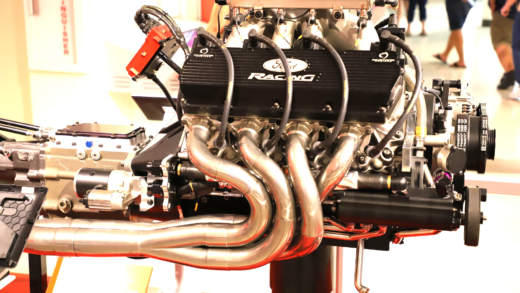This article explores the fascinating world of Formula One, covering its origins, car components, race formats, regulations, scoring systems, team dynamics, technology, challenges, fan engagement, and future trends. Understanding these elements offers insight into what makes Formula One a unique and thrilling sport.
How Formula One Started: A Dive into its Origins
Formula One racing, known for its speed and precision, originated in the early 20th century. The first race, held in 1950 at Silverstone, marked the beginning of a new era in motorsport. This event was a culmination of various national racing competitions that preceded it, such as the European Championship of 1925. The name “Formula” refers to the set of rules that all participants must follow.
Initially, races were dominated by European manufacturers like Ferrari and Alfa Romeo. These brands pioneered techniques that are still relevant today. For example, aerodynamics began to play a crucial role as teams started to realize that the shape of a car could significantly affect its speed. Over the decades, Formula One has evolved, incorporating new technologies and safety measures, responding to the demands of both fans and regulators.
By the 1980s, turbocharged engines became common, enhancing the power output of cars, while the 1990s introduced electronic aids, improving driver performance. Today, Formula One continues to innovate with hybrid technologies and advanced materials, keeping the spirit of competition alive.
Key Components of a Formula One Car: What Makes Them Unique?
Formula One cars are not just about speed; they are engineering marvels. Each car is a complex assembly of components designed to maximize performance and safety. Key components include:
- Chassis: The backbone of the car, made from lightweight materials like carbon fiber.
- Engine: Modern F1 cars use hybrid engines that combine internal combustion and electric power.
- Aerodynamics: Wings and diffusers are designed to create downforce, allowing cars to stick to the track at high speeds.
- Suspension: Sophisticated systems help maintain tire contact with the road, enhancing grip.
- Tires: Specially designed for various conditions, they are crucial for performance.
The unique combination of these components allows Formula One cars to achieve extraordinary speeds and agility, making them a sight to behold on the track.
The Race Format: How Do Formula One Races Work?
Understanding the race format is essential to appreciating Formula One. Each race weekend typically consists of three main parts:
- Practice Sessions: Teams have several practice sessions to fine-tune their cars and strategies.
- Qualifying: This determines the starting grid for the race. Drivers aim for the fastest lap time to secure the best position.
- The Race: Races usually last around 90 minutes and cover a distance of about 305 kilometers.
During the race, drivers must manage fuel, tire wear, and strategies for pit stops. The excitement builds as teams react to changing conditions and competitors’ tactics, making each race a thrilling spectacle.
Rules and Regulations: What Governs Formula One?
Formula One is governed by a strict set of rules designed to ensure fair competition and safety. The FIA (Fédération Internationale de l’Automobile) oversees these regulations. Key aspects include:
- Technical Regulations: These outline specifications for car design, ensuring all teams compete on an even playing field.
- Sporting Regulations: These cover race procedures, including start procedures, penalties, and safety car protocols.
- Driver Conduct: Drivers must adhere to specific behavior guidelines, promoting sportsmanship and respect on the track.
Understanding these rules is crucial for fans, as they shape the outcomes of races and the championship standings.
Scoring System in Formula One: How Points Are Earned?
The Formula One scoring system is crucial for determining the championship standings. Points are awarded based on finishing positions in each race. The top ten finishers receive points as follows:
- 1st Place: 25 points
- 2nd Place: 18 points
- 3rd Place: 15 points
- 4th Place: 12 points
- 5th Place: 10 points
- 6th Place: 8 points
- 7th Place: 6 points
- 8th Place: 4 points
- 9th Place: 2 points
- 10th Place: 1 point
This system emphasizes the importance of consistently finishing in the top positions throughout the season. Additionally, drivers earn bonus points for achieving the fastest lap, provided they finish in the top ten. This adds an extra layer of strategy, as teams may choose to push for that additional point during the race.
Over a season, the driver with the most points is crowned the World Champion. Teams also compete for the Constructors’ Championship, accumulating points based on their drivers’ performances. This dual scoring system fosters intense competition, as every point can significantly impact the championship outcome.
What Sets Formula One Apart from Other Racing Leagues?
Formula One is distinct from other racing leagues in several key ways. Firstly, the level of technology involved is unparalleled. Formula One cars are at the forefront of engineering, featuring hybrid power units, advanced aerodynamics, and sophisticated telemetry systems that provide real-time data analysis. This technological edge gives teams a competitive advantage, unlike in other racing formats.
Secondly, the global reach of Formula One is exceptional. The championship travels to iconic circuits around the world, from Monaco to Suzuka, creating a diverse fan base. This international presence not only showcases different cultures but also brings unique challenges, such as varying weather conditions and track surfaces.
Moreover, the regulatory framework in Formula One is stringent. Teams must adhere to detailed technical and sporting regulations set by the FIA, ensuring a level playing field. In contrast, many other racing leagues have looser regulations, allowing for a wider variety of car designs and technologies.
Roles of Teams and Drivers: Who Does What?
In Formula One, the dynamics between teams and drivers are complex and critical to success. Each team consists of various roles, including engineers, strategists, and mechanics, all working in harmony to optimize performance. The team principal oversees operations, making strategic decisions that can affect the race outcome.
Drivers, on the other hand, are the face of the team. They are responsible for not only driving the car but also providing feedback on its performance. This feedback is vital for engineers to make necessary adjustments. Drivers must also manage race strategies, including when to push for speed and when to conserve resources.
The collaboration between drivers and their teams is essential. Successful teams foster strong communication and trust, allowing for quick adaptations during races. The synergy between driver and team can lead to victories, while miscommunication can result in costly mistakes. Understanding these roles enhances the appreciation of the sport’s intricacies.
Technology’s Role in Performance: How Does It Affect Racing?
Technology is a driving force in Formula One, influencing nearly every aspect of the sport. From the design phase to race day, technological advancements play a pivotal role in performance. For example, the introduction of hybrid engines has revolutionized power output and efficiency, allowing teams to maximize speed while minimizing fuel consumption.
Aerodynamics is another area where technology shines. Computational fluid dynamics (CFD) and wind tunnel testing enable teams to refine car shapes, creating downforce that enhances grip and stability at high speeds. This scientific approach to car design sets Formula One apart from other racing leagues.
Additionally, telemetry systems gather vast amounts of data during races, monitoring tire wear, engine performance, and fuel levels. Teams analyze this data to make real-time decisions, such as adjusting pit stop strategies or modifying driving techniques. This reliance on technology not only improves performance but also adds excitement, as teams must adapt to rapidly changing conditions on the track.
Challenges Faced by Teams and Drivers: What Are the Major Hurdles?
Formula One teams and drivers encounter numerous challenges throughout the racing season. One significant hurdle is the ever-changing regulations imposed by the FIA. Teams must adapt their strategies and car designs to comply with new rules, which can lead to costly adjustments. Additionally, the financial pressures of competing at this level are immense. Teams invest millions in research and development, and any underperformance can jeopardize their financial stability.
Another major challenge is the physical and mental demands placed on drivers. They experience extreme G-forces, which can be exhausting. Moreover, the mental pressure to perform consistently at high levels can lead to stress and burnout. Weather conditions also add an unpredictable element to races, making it essential for teams to be adaptable and prepared for any scenario. These hurdles make Formula One not just a test of speed, but a rigorous challenge of strategy and endurance.
The Importance of Pit Stops: Why Are They Critical?
Pit stops play a crucial role in the outcome of Formula One races. During a race, teams strategically plan pit stops to change tires and make necessary adjustments to the car. A well-timed pit stop can significantly enhance a driver’s performance, providing fresh tires that improve grip and speed. Conversely, a poorly executed pit stop can lead to lost time and positions.
Teams practice pit stops extensively, aiming to minimize the time spent in the pits. For instance, some teams can complete a tire change in under two seconds. This efficiency can make a difference in a race, especially during close competition. Additionally, teams must consider the timing of pit stops concerning race strategy and weather conditions. The ability to make quick, informed decisions during a pit stop can be the key to victory.
Fan Engagement: How Are Fans Involved in the Formula One Experience?
Fan engagement is a vital aspect of Formula One. The sport has embraced digital platforms to connect with fans globally. Social media channels allow fans to interact with their favorite teams and drivers, sharing insights and behind-the-scenes content. Furthermore, Formula One hosts fan festivals and events during race weekends, providing fans with immersive experiences.
Additionally, the introduction of F1 TV offers fans access to live races, onboard cameras, and team radios, enhancing the viewing experience. This direct connection between fans and the sport fosters a passionate community. The excitement of live races, combined with interactive digital content, makes following Formula One a thrilling experience for fans worldwide.
The Future of Formula One: What Lies Ahead?
The future of Formula One is poised for significant changes. With a growing emphasis on sustainability, the sport is exploring hybrid technologies and alternative fuels to reduce its environmental impact. The introduction of new regulations aimed at promoting closer racing and improving overtaking opportunities is also on the horizon. These changes are designed to make races more exciting and accessible to a broader audience.
Moreover, advancements in technology will continue to shape the sport. From data analytics to AI-driven strategies, teams will increasingly rely on cutting-edge technology to enhance performance. The global fan base is expected to expand further, thanks to the sport’s commitment to engaging younger audiences through digital platforms. As Formula One evolves, it aims to maintain its status as the pinnacle of motorsport while addressing modern challenges and opportunities.





Comments are closed.